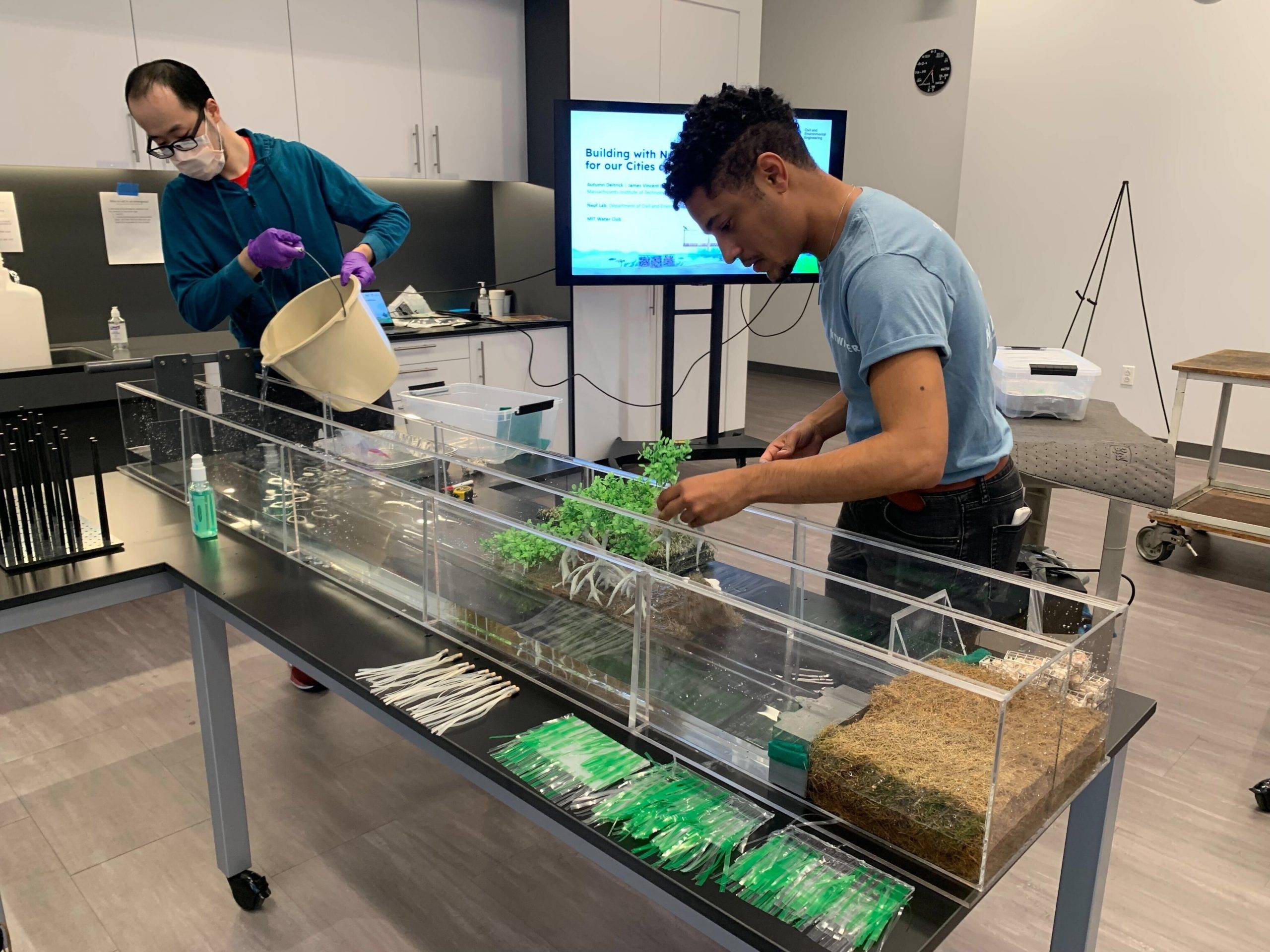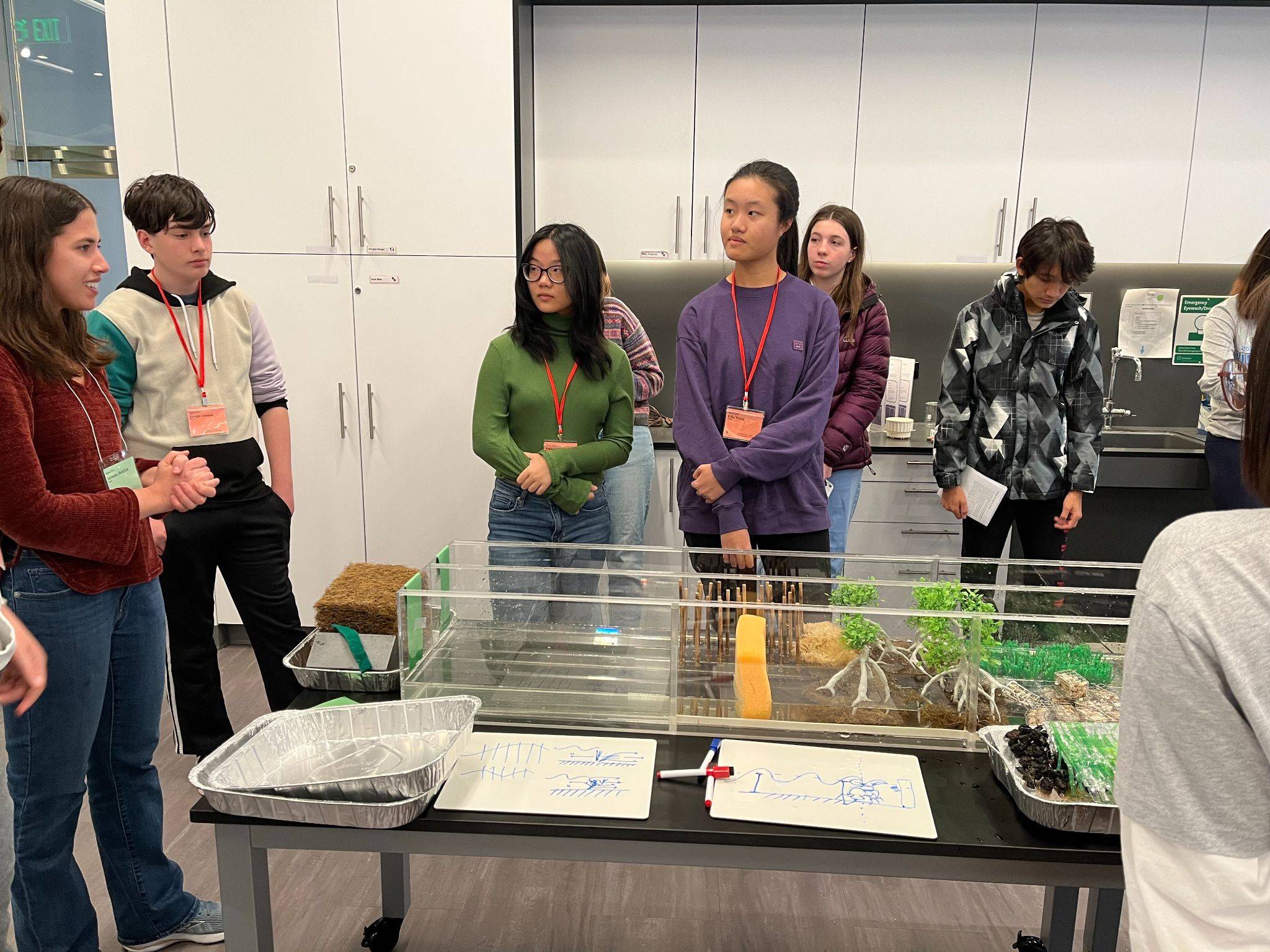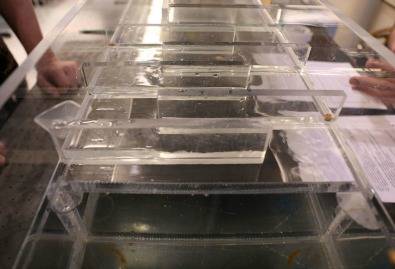Community Education And Outreach
Developed by James Vincent Brice, Autumn Deitrick, and Prof. Heidi Nepf
With generous support from the MIT Water Club and MIT Department of Civil and Environmental Engineering
This hands-on wave flume activity introduces students and adult audiences to the way coastal ecosystems like mangrove forests, salt marshes, seagrass meadows and oyster reefs protect our shorelines in the face of global climate change. Workshop participants have the opportunity to design their own shoreline adaptation, choosing from a kit that includes models of nature-based solutions like seagrass and oyster gabions, as well as traditional infrastructure. Using both quantitative and qualitative analysis methods, participants and facilitators work together to develop not only a greater physical intuition of water wave mechanics, but also an understanding of the various physical, ecological, and social processes at play in the field of coastal adaptation.
This activity has been featured at MIT Splash, the Cambridge Science Festival, and by the MIT Department of Civil and Environmental Engineering.
Special thanks to Caroline Langmeyer and Diego Temkin
Developed by Prof. Heidi Nepf and Prof. Trish Culligan
Grungy Groundwater is a hands-on activity that challenges students to discover how water and pollutants move underground, and how pollutants impact drinking water supplies in their community. During the activity, students first explore how fluids travel through different soil types. In the second part of the activity, the students construct a model of the subsurface and use it to investigate the migration of water and pollutants underground.
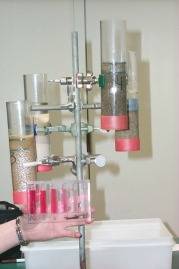
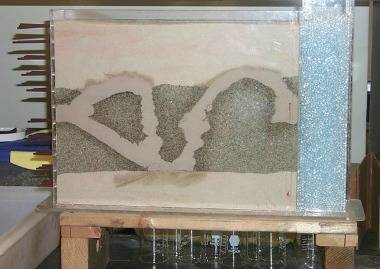
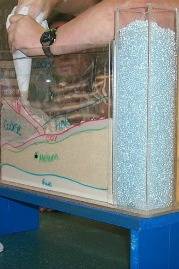
The activity ends with a discussion of how a community might respond after discovering contamination in their drinking wells. The activity is offered through the MIT Edgerton Outreach Program, directed by Amy Fitzgerald. This center hosts over 2000 students a year from public schools and community groups.
Guide for building and using the Grungy Groundwater Activity
April 23, 2016
Urban Constructed Wetlands
Developed by PIS Prof. Alan Berger (DUSP), Prof. Heidi Nepf, and Celina Balderas Guzman
Photo Credits: Gary Lei
With funding from the MIT Abdul Latif Jameel World Water and Food Security Lab, a team of MIT designers, urban planners, and engineers are exploring the use of constructed wetlands as a storm water solution in cities, and more broadly the use of wetlands as green infrastructure that provide water re-use, water quality enhancement, flood protection, and public green space within a city. In this activity we describe the ongoing design study and visitors participate in a hands-on experiment to compare the hydrodynamic performance of different wetland designs chosen by the visitors.

